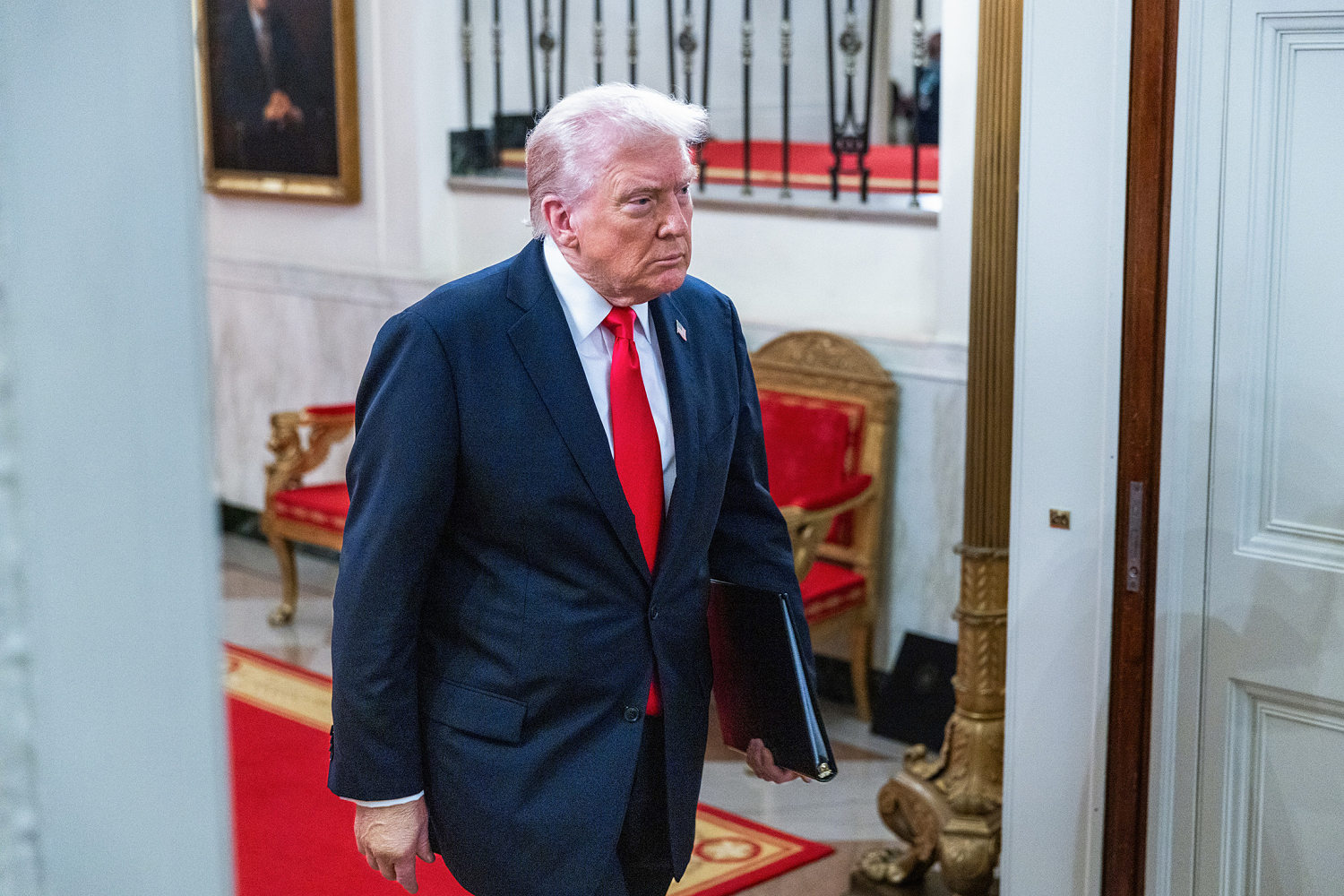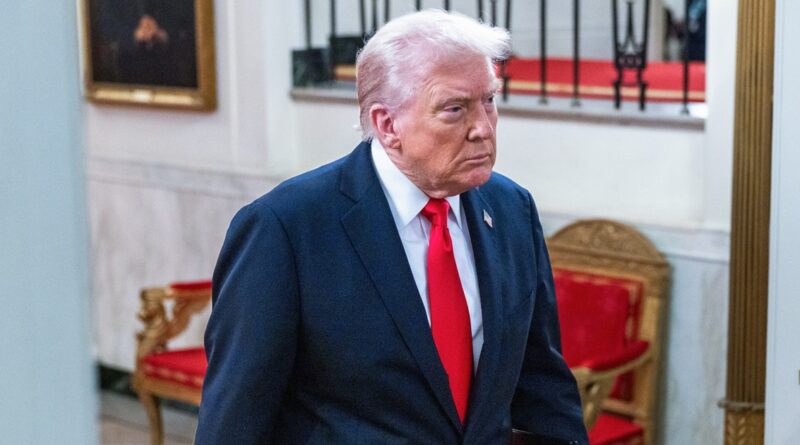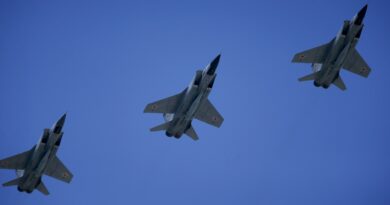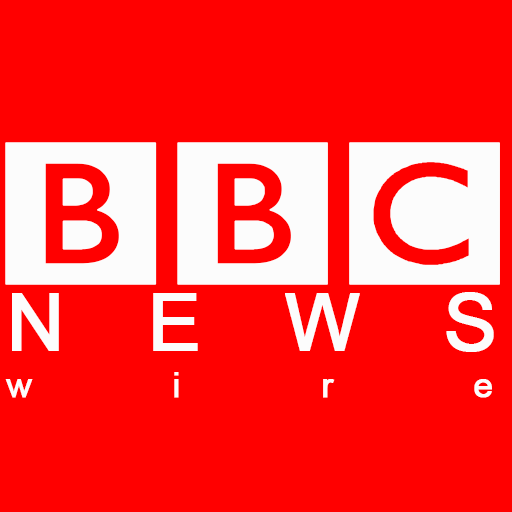Trump heads to Asia with trade — and tensions with Xi — on the agenda

KUALA LUMPUR— President Donald Trump arrives in Malaysia on Sunday for his first visit to Asia since returning to office, a three-nation tour through Malaysia, Japan, and South Korea that is expected to culminate in a meeting with Chinese President Xi Jinping, as tensions between the world’s two biggest economies tick higher.
“The first message is Trump the peacemaker. The second is Trump the moneymaker,” said Victor Cha of the Center for Strategic and International Studies. “And then, of course, with the meeting with China, I think what everybody’s expecting is that there’s probably not going to be a big trade deal, but there will be an effort to de-escalate or put a pause on the situation.”
Trade is expected to dominate the week. Aboard Air Force One on Friday, Trump said he would subsidize U.S. farmers if he did not reach a deal with China, and that he planned to discuss the ongoing Russia-Ukraine war with Xi, saying he’d like to see China “help us out.”
The president also suggested he was angling for a meeting with North Korean Leader Kim Jong Un, even as the White House has said that no meeting is planned.
“You know, they don’t have a lot of telephone service,” Trump said, before urging reporters to “put out the word.”
In Kuala Lumpur, Trump is scheduled to meet with Malaysian Prime Minister Anwar Ibrahim before attending a working dinner of the Association of Southeast Asian Nations leaders. Malaysia, this year’s ASEAN chair, has set “Inclusivity and Sustainability” as the summit theme.
The White House said Trump will also join a signing ceremony for a peace agreement between Cambodia and Thailand, whose deadly border conflict he has claimed credit for helping to resolve. During his first term, Trump attended the annual ASEAN summit only once.
Sandwiched between the summit in Kuala Lumpur and South Korea’s Asia-Pacific Economic Cooperation conference, Trump will pay an official visit to Japan, his fourth, for talks with the new Prime Minister Sanae Takaichi and an audience with Japanese Emperor Naruhito.
Takaichi, a conservative protege of the late Shinzo Abe, has pledged to raise defense spending to 2% of GDP by March, two years ahead of schedule, a target likely to draw praise from Trump, who has pressed for allies to spend more. She has also raised the idea of revisiting the U.S.-Japan trade deal announced in July.
Trump and Abe forged a close personal relationship during his first term, before Abe’s assassination in 2022. Trump will also meet with business executives and visit American troops while in Japan, a country that hosts more U.S. service members than any other in the world.
In South Korea on Wednesday, Trump is slated to address business leaders at APEC, hold a bilateral meeting with the president, and attend a leaders’ dinner that evening.
Topping the agenda at every stop is trade, with negotiators still ironing out the details of pacts with South Korea and Japan and taking steps towards agreements with China and Malaysia. U.S. and Chinese delegations are meeting in Malaysia over the weekend ahead of Trump’s arrival in Kuala Lumpur.
“It’s not the U.S. president coming to Asia to meet the multilateral schedule; it’s the U.S. president coming to Asia and then bending the multilateral schedule around his schedule,” said Cha, noting Trump is skipping the U.S.–ASEAN leaders meeting, the East Asia Summit, and formal APEC sessions. Even so, Cha said regional leaders are eager to engage.
“Everybody still wants to cut a deal with the U.S. president,” he said. “They all want tariff relief, and they will try to make a deal to achieve that.”
Central to the trip is Trump’s anticipated meeting with Xi in South Korea on Thursday, though Beijing has not yet confirmed the session. Top officials from the U.S. and China are sitting down in Malaysia on Saturday to find a way forward after Trump threatened new tariffs of 100% on Chinese goods and other trade limits starting on November 1 in response to China’s expanded export controls on rare earth minerals and related technologies.
Trump has said he plans to raise fentanyl, accusing China of failing to curb the flow of precursor chemicals, and a senior administration official said China’s purchases of Russian oil will also be on the table. Trump said he also expects to discuss Taiwan.
“We have a lot to talk about with President Xi, and he has a lot to talk about with us,” Trump said Friday, adding he expects “a good meeting” even as he has intermittently threatened to call it off over trade frictions, including soybean purchases.
Both leaders want the optics and tactical aspect of this meeting to go well, a person familiar with the meeting planning said.
Analysts urged caution about what a leader-level encounter can deliver. “During Trump’s first term, high-level exchanges with China did not prevent him from later taking a harder line,” said Sun Chenghao, a fellow at Tsinghua University’s Center for International Security and Strategy. “So the symbolic value of summit diplomacy should not be overstated.”
Earlier this week, a senior administration official pushed back on speculation that Trump could reprise his 2019 encounter with North Korean leader Kim Jong Un, when he made a surprise visit to the demilitarized zone that separates the two Koreas in an effort to revive nuclear talks that had collapsed. Trump said before leaving Washington on Friday that he “would like” to meet with Kim, but was unsure whether it would happen on this trip.
Kim says he will negotiate only if the U.S. recognizes North Korea as a nuclear power, and has only further strengthened his weapons programs since Trump’s first term.
“I think they are sort of a nuclear power,” Trump seemed to acknowledge as he began his journey to Asia on Friday, perhaps paving the way for a possible meeting. “They’ve got a lot of nuclear weapons. I’ll say that.”





